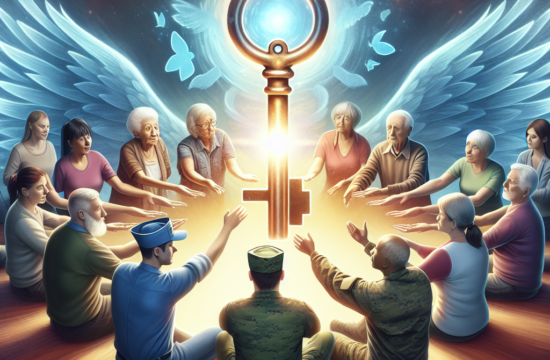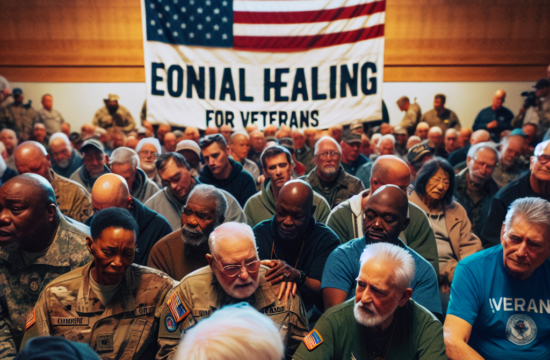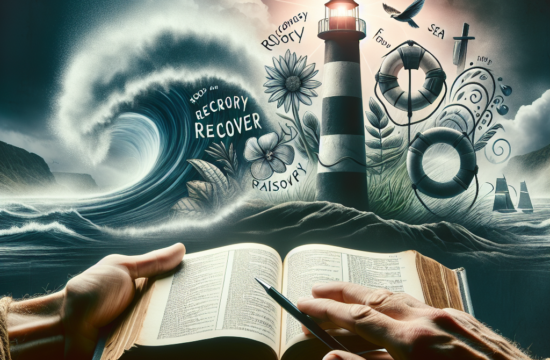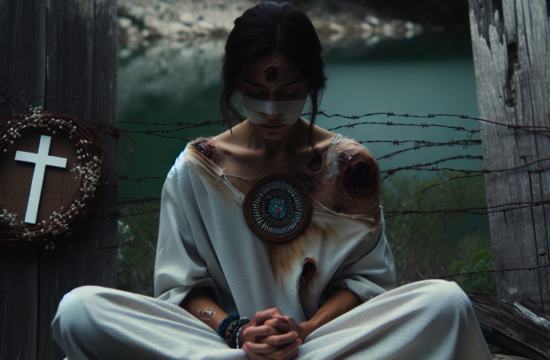==> Thank you for reading this post! Click Here If you are looking for support and Victory over PTSD.
Understanding PTSD and Its Effects
What is PTSD?
PTSD, or Post-Traumatic Stress Disorder, is a mental health condition triggered by experiencing or witnessing a traumatic event. This disorder can affect anyone, from veterans to individuals who endured personal traumas. It can haunt people, creating feelings of anxiety, hopelessness, and even physical symptoms like chronic pain.
Often, those suffering from PTSD can feel isolated. They might feel like no one truly understands what they’re going through. This can make day-to-day life overwhelming, leading to a sense of helplessness that further complicates their mental wellbeing.
Recognizing PTSD is the first step toward healing. The symptoms can be varied—flashbacks, severe anxiety, and uncontrollable thoughts about the event are just the tip of the iceberg. Acknowledging these feelings can be empowering, marking the beginning of the journey toward recovery.
The Traditional Approach
It’s pretty common for those with PTSD to initially seek traditional therapy methods, such as talk therapy or medication. While these can be effective for some, they don’t always address the underlying issues in a comprehensive way. Trust me, I know how frustrating it can be when a solution doesn’t seem to fit your unique needs.
Conventional treatments may provide temporary relief but often leave individuals feeling disconnected from their true selves. It can feel like you’re just checking boxes without tackling the deeper roots of your pain. This realization often pushes people to seek alternative options.
Traditional methods often overlook factors like lifestyle, diet, and emotional health all of which play a massive role in recovery. It’s crucial we understand that healing isn’t just about addressing the symptoms but nurturing the entire person, mind and body.
The Need for Holistic Therapy
Holistic therapy has become a beacon of hope for many seeking more integrated approaches. We’re talking about treating the whole person, not just the symptoms. This can encompass everything from mindfulness practices to alternative therapies like acupuncture or art therapy.
What’s super refreshing about holistic therapy is that it allows for a customization of treatment. Each individual can find a unique approach that resonates with their specific experience and needs. It’s flexible, personal, and focuses on empowerment, which can be incredibly healing.
Moreover, embracing holistic therapy can be a game-changer in how individuals perceive trauma and recovery. Instead of feeling like a victim of their circumstances, they begin to thrive as they develop coping strategies that resonate with their inner selves. This empowerment can help them reclaim their lives.
Exploring Holistic Remedies
Meditation and Mindfulness
Meditation and mindfulness have become buzzwords in recent years, and for a good reason! They offer a pathway to clarity and peace amidst the chaos PTSD can create. Sitting quietly and focusing on your breath might seem simple, but it can be transformative.
What I found most helpful was creating a daily routine with meditation. Initially, it was tough to quiet my mind. But with time, I discovered that just a few minutes each day could significantly reduce my anxiety. It’s like giving yourself a mini-vacation from the noise of your thoughts!
The beauty of mindfulness lies in its practice—being present in the moment halts the mind’s tendency to ruminate on the past. It shifts your focus from trauma to simply being, allowing acceptance and healing to begin.
Nutritional Healing
Did you know what you eat can impact your mental health? Nutrition plays a vital role in overall wellbeing, and this is especially true for those dealing with PTSD. Eating a balanced diet rich in whole foods can help boost mood and energy levels.
When I began to pay attention to my diet, I started avoiding processed foods and embraced more fruits, vegetables, and healthy fats. This small change made a huge difference in my mental state, contributing to less anxiety and more stable moods.
It wasn’t just about eating better; it was a holistic approach that tied back into my emotional health. Preparing and enjoying nutritious meals became part of a self-care routine that fostered positive feelings and a more vibrant outlook on life.
Bodywork Therapies
Bodywork therapies, such as yoga or massage, can be incredibly beneficial for individuals recovering from PTSD. These practices ground you in your body, helping to release trauma stored within. In my experience, attending a weekly yoga class offers not just physical benefits but also emotional balance.
With gentle movement and focused breathing, I found that yoga helped me reconnect with my body, which felt so alien before. It’s like my body was a foreign land, and yoga became the map that guided me back to my strength and resilience.
Moreover, massage therapy can soothe the body and release deep-seated tensions. The idea that someone is there to help untangle the knots of stress was significantly healing. It’s about finding comfort and care that support your journey toward becoming whole again.
The Importance of Community Support
Finding Your Tribe
Connecting with others who have faced similar challenges can feel like finding a family. Support groups offer a space where you can share experiences, successes, and struggles without fear of judgment. Being part of such a community has been monumental in my healing journey.
When you’re surrounded by people who get it, it alleviates that lonely feeling that often accompanies PTSD. Everyone’s story is different, but the understanding and camaraderie create a bond that helps in the healing process.
Having a solid support system can remind you that you don’t have to face challenges alone. Sharing experiences, laughter, and even tears can be profoundly therapeutic and a vital aspect of recovery.
Get Support and Help with Recovery! Visit us for more Information and Support
Peer Support Programs
Peer support programs involve connecting with trained individuals who have lived through similar experiences. This direct line to someone who truly understands your feelings and struggles can be incredibly validating.
There’s just something about talking to someone who’s been there; it’s like they can speak your language. This can lead to a feeling of safety, allowing you to open up about your experiences without the fear of being misunderstood.
Moreover, these programs often involve structured guidance, providing coping strategies that have worked for others in the community. This shared knowledge can spark hope, reminding us that recovery is not only possible but attainable!
Building Healthy Relationships
Engaging in healthy relationships can create a support network that encourages growth and healing. Surrounding yourself with positive, understanding people changes your environment and helps cultivate resilience.
Establishing trust in relationships can be challenging for someone with PTSD. But with time, you can learn to let people in and cherish the connections that lift you up. I’ve learned that the right friendships can serve as anchors during turbulent times.
The more you engage and foster relationships, the more you learn about the importance of communication and vulnerability—crucial elements in navigating your recovery journey. It’s all about surrounding yourself with people who push you toward the light rather than keep you in the shadow.
Reclaiming Your Future
Setting Personal Goals
Recovery from PTSD is not just about managing symptoms; it’s also about envisioning a future that excites you! Setting personal goals can spark motivation and create a sense of purpose that sometimes feels lost in the depths of trauma.
Whether it’s learning something new or pursuing a passion that was sidelined, having something to work toward can be incredibly uplifting. I started with small, achievable goals, which gradually built my confidence and helped me reclaim my direction.
Remember, goals don’t have to be monumental! Even simple daily objectives can foster a sense of accomplishment and progress, steering you away from feelings of stagnation and towards growth.
Embracing Change
Change can be daunting, especially when part of you clings to past trauma. However, embracing change is essential in any recovery journey. It signals that you are ready to move beyond the pain and make room for something beautiful and new in your life.
For me, embracing change meant letting go of past narratives that held me back. It was about redefining who I am outside of the trauma. Every step I took toward change reinforced my resilience and ability to navigate the unpredictable waters of life.
Knowing that change doesn’t happen overnight helped me cultivate patience with myself. Every little step counts, and with that mindset, you can transform your life in ways you didn’t think possible!
Living with Intention
Living with intention means embracing practices that align with your values and goals. It’s about consciously making choices that uplift your mental health and enrich your life. I’ve found that when I set daily intentions, it brings clarity and purpose to my day.
By focusing on what genuinely resonates with you, you can create an existence filled with meaning. Whether that’s through self-care, nurturing relationships, or pursuing passions, being intentional about your life decisions can change your entire outlook.
At the end of the day, it’s essential to remind yourself that healing is not a straight line. It’s a beautiful, chaotic journey filled with twists and turns, and living with intention can guide you through those complexities.
Frequently Asked Questions
1. What are the main components of PTSD holistic therapy?
The main components include understanding PTSD, exploring holistic remedies like meditation, nutritional healing, and bodywork therapies, finding community support, and reclaiming your future through intentional living.
2. How does meditation help in healing PTSD?
Meditation helps calm the mind, reduces anxiety, and fosters acceptance, allowing individuals to find peace amid trauma. It’s a practice that promotes mindfulness, enabling recovery from symptoms associated with PTSD.
3. Can nutrition impact mental health when dealing with PTSD?
Absolutely! A balanced diet rich in whole foods can positively influence mood and energy levels, creating a better foundation for mental health and emotional stability in those experiencing PTSD.
4. Why is community support important in the recovery process?
Community support is vital because it offers a safe space to share experiences and feelings. It fosters understanding, reduces feelings of isolation, and provides encouragement to thrive on the healing journey.
5. What does it mean to live with intention in the context of PTSD recovery?
Living with intention means making conscious choices that prioritize personal healing and growth. It involves setting goals, engaging in self-care, and aligning daily actions with one’s values to foster resilience.










